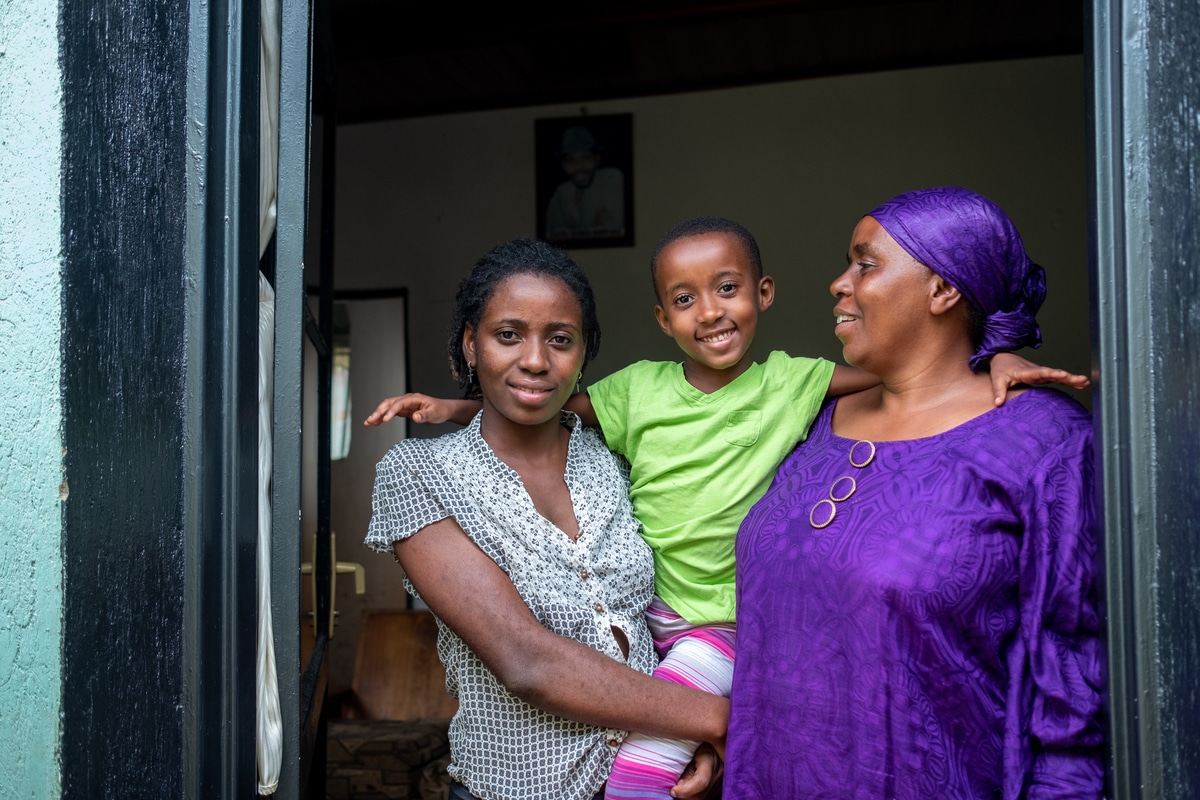Professor Barry Bogin has been a student of human physical growth and development since the 1970s. An anthropologist, and expert on child development, particularly the effects of social, economic and political issues on physical development, he spoke with us after the recent news coverage of his study confirming what we instinctively know: children need love and hope to grow.

Hope and Homes for Children’s Amelia Whyman caught up with Barry to find out more about his research.
Amelia Whyman (AW): Barry, having studied child development for decades, you’re a convert to children’s emotional wellbeing as a key factor in their overall health and development. Can you tell us how that came about?
Prof Barry Bogin (BB): Well, I never really thought about the emotional side of things until quite recently. I was mostly convinced by the other ‘big shots’ of the day, that children’s development was [about] nutrition or infection.
Those are the first two things the World Health Organisation lists as affecting kids’ growth. The third thing is inadequate care. So essentially, they’re putting the blame on mothers or whoever’s taking care of the kids.
There’s nothing wrong with those things! Of course kids need food. And of course kids need good health. And of course kids need good care from other people.
But, the World Health Organisation says nothing about society. It’s all ‘the family’. 90% of all interventions that I’ve been involved with focus on a mother and her baby. And we don’t think about society at large.
Why are these people poor to begin with? Why are they marginalized to begin with? Why are they suffering? Why are they stressed out 24 hours a day, 7 days a week? We don’t think about that. We just say, ‘if we sprinkle some nutrients on their food, or we give them a flush toilet, let’s see if that makes the kids healthier’.
Well, it doesn’t.
Good nutrition alone is not enough
That realisation came from analysis I did, with others, of nutritional interventions in low-income urban areas around the world; we found these nutritional interventions either have no effect, or their effect is smaller than possible measurement errors, or they actually had negative effect.
In other words, the kids who got the intervention at the end were shorter than the kids who didn’t get that. These are under 5s.
So several popular reviews have found that nutritional interventions or sanitation interventions have no effect on improving growth.
And that got me to say, well, what does?
Upstream factors
At that time, some other people were already talking about ‘upstream factors’ – the social, political and economic system of the society.
And I already knew this. It was not a surprise, but I had never put two and two together. So, around eight years ago, finally, I did put two and two together.
I said, yes, it’s, it’s these upstream factors. It’s the love of the society. If a society doesn’t love its people, those people suffer. If the society is selfish and hoards resources for the few who are in power, and then if there’s violence on top of it, then the marginalized just suffer.
The chronic stress of suffering
As we know now, they suffer because they have chronic physiological stress and that stress produces hormones. We all get short term stress hormones, for example crossing the street in front of a bus, or if you’ve got a big exam next week. It’s good to have a stress response at that time; it will get your heart rate and blood pressure up, it diverts calories from elsewhere in your body to fighting or fleeing. That’s fight or flight syndrome.
But, when you have chronic stress 24/7, when you’ve been exposed to stress before you were even born, because your mother’s been suffering chronic stress for decades, that blocks your own physical growth, brain development, cognitive development, your school performance – everything. Those stress hormones are antagonistic to growth hormones. The relationship is very clear.
Stunted growth
And not only do stress hormones block growth of the skeleton, they promote the storage of any extra calories as fat. And that’s what we see around the world today. In middle- and low-income countries, our kids suffer a very high prevalence of what’s called stunting. That’s a very short height for age.
Kids in orphanages, many of them are stunted because they just stop growing. As soon as they get out of the orphanage, one of the first things that social workers know is you’ve got to find new clothes, because they grow.

(AW). This is fascinating. From your own years of work, typically how long would you say it can take a child to recover, when love and hope are reintroduced into their life?
In kids under five, and maybe even up to nine or so, the effect is almost immediate; a month, perhaps six weeks.
So the power of love works very quick.
I worked in Guatemala for many years studying the growth of Maya (people native to Central America) school kids. Later on, I measured Maya boys and girls who were in the United States. I measured the kids in primary school, children between the ages of five and 12. And in 1992, I found that they were about 7cm taller than children the same age back in Guatemala, including their own brothers and sisters. In 2000 I remeasured a different group – same places, same schools – and they were 11cm taller. And not only were they 11cm taller, which is just amazing, they were taller than their own brothers and sisters who had been born or spent their early lives in Guatemala. So it wasn’t genetic. It was clearly something about life in the United States.
Now these families were still poor. Many of the parents were still undocumented. But most of the kids by 2000 had been born in the U.S. The law in the U.S. is if you’re born in the U.S., you’re a citizen. That’s it. So these kids were entitled to services that citizens get; breakfast and lunch at schools, and some health care. And of course, that helped nutrition and health status. But that explains maybe two, three, four centimetres.
So let’s say half of it is due to nutrition and healthcare. The other half is due to the lack of this chronic, toxic stress in their lives.
They weren’t afraid, their parents weren’t afraid, the mothers weren’t as afraid when they were pregnant. They could walk down the street, and they were just kids; they weren’t the target of a civil war. They weren’t the target of Guatemalan government genocide campaigns.
Stress takes a toll on everyone in society
But fear is still a problem for everybody in the country. That’s what I pointed out in another article I did before Love and Hope – Fear, Violence, and Stunting in Guatemala.
The children of the richest people in Guatemala have a stunting rate of 17%. It should be less than 2%. In a normal situation, some kids have to be short, some kids have to be tall – that’s just the way height is distributed – with a bell-shaped curve of heights, where most people are in the middle.
In other countries like Pakistan and India the richest families have over 20% stunting in under five-year-olds. That’s a sign that you can’t get away from it. If the society is corrupt and violent and mistreats the lowest 20% of the population, that also affects the wealthiest.
Because the wealthiest have to live in that country too.
Little kids in orphanages live with that kind of fear too. Maybe they’re not going to be kidnapped (like in Guatemala), but they can be physically abused, sexually abused.
————————
In the second part of our interview, Professor Bogin discusses how with the loss of our own orphanages, many higher income countries have forgotten the importance of one to one care for children’s development, and his own hopes for an end to orphanage use worldwide.
